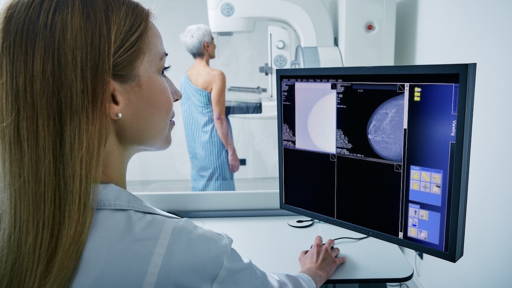In an era in which AI increasingly supports medical processes, its application in healthcare goes beyond robotic surgery and data-driven diagnoses. One of the most impactful but underrated developments is the translation of medical reports into language that patients can understand. Thanks to this digital translation using current and future AI models, complex reports are made accessible and AI contributes significantly to strengthening the relationship between healthcare providers and patients.
Understandable language as medicine
Where medical reports used to be full of technical terms and Latin abbreviations, AI applications now make it possible to automatically rewrite these reports in understandable, patient-friendly language.
This increases:
- Health literacy: Patients understand their diagnosis and treatment better and can therefore make more informed choices.
- Trust in healthcare providers: Transparent communication strengthens the relationship between doctor and patient.
- Adherence to treatment: Understanding leads to better compliance with medication and treatment advice.
- More efficient consultations: Less time needed for explanations, more room for attention and empathy.
The risks of simplification
Although the use of AI in translating medical jargon offers great potential, there are also risks. AI systems work with algorithms, and although they are impressive, they can miss medical-ethical nuances.
Points to consider are:
- Loss of nuances and details: Over-simplification can destroy crucial information.
- Misinterpretation: Words without context can lead to confusion or misunderstandings, causing patients to draw unintended conclusions.
- Privacy and emotional impact: The content of a medical report remains sensitive and deserves care, even when written in understandable language.
- Dependence on technology: Full automation without medical review is irresponsible.
That is why human supervision is still essential at this stage. Doctors and healthcare providers must always check and contextualise AI output.
Equality in the consultation room
What makes this technology truly special, however, is how it transforms the relationship between doctor and patient. Translating medical jargon into patient-friendly language does more than just clarify: it makes communication more equal and empathetic. Patients feel more taken seriously, which changes the conversation from a one-way street to a dialogue.
AI does not act as a replacement for the doctor, but as an enhancer of their human qualities.
In my opinion, this development fits seamlessly into the broader trend of “people-centred digitalisation” in healthcare. Instead of technology that replaces, we are increasingly seeing technology that supports, enhances and connects.
It helps with:
- Greater involvement: Patients feel taken seriously and are more likely to ask questions.
- Strengthening empathy: Doctors who use understandable language show more compassion.
- Preventing misunderstandings: Clarity prevents frustration and false assumptions.
The use of AI for language understanding is therefore not a replacement for care, but a reinforcement of the human touch.
The future of digital healthcare communication
This trend fits perfectly with the move towards people-centred digitalisation. AI does not necessarily have to be clinical and distant: it can actually help to make healthcare warmer, more accessible and more personal. The future of healthcare therefore lies not only in faster diagnoses and smart algorithms, but also in comprehensibility and the human touch. AI-driven translation of medical language is therefore not a technical gimmick, but a crucial step towards better healthcare communication. Successful implementation of this technology requires collaboration between developers, language experts and healthcare professionals. Only then can a system be created that is not only smart, but also careful, empathetic and ethically responsible.
Conclusion: In a world where technology is becoming increasingly prevalent in healthcare, understandable language is key to humanity. AI can bridge this gap, provided we maintain the right balance between automation and personal attention.
Disclaimer
The situation I have described above is not yet everyday practice, but an example and development in the near future. Medical results can be both favourable and unfavourable. Please bear in mind that any expectations at this stage are only prospects and not guarantees. Therefore, decide for yourself, based on your own insights, knowledge and expertise, whether you want your medical report or statement to be converted into plain language. And of course, it goes without saying that you should never share your personal details, including your name and address, with an AI model or chatbot.









